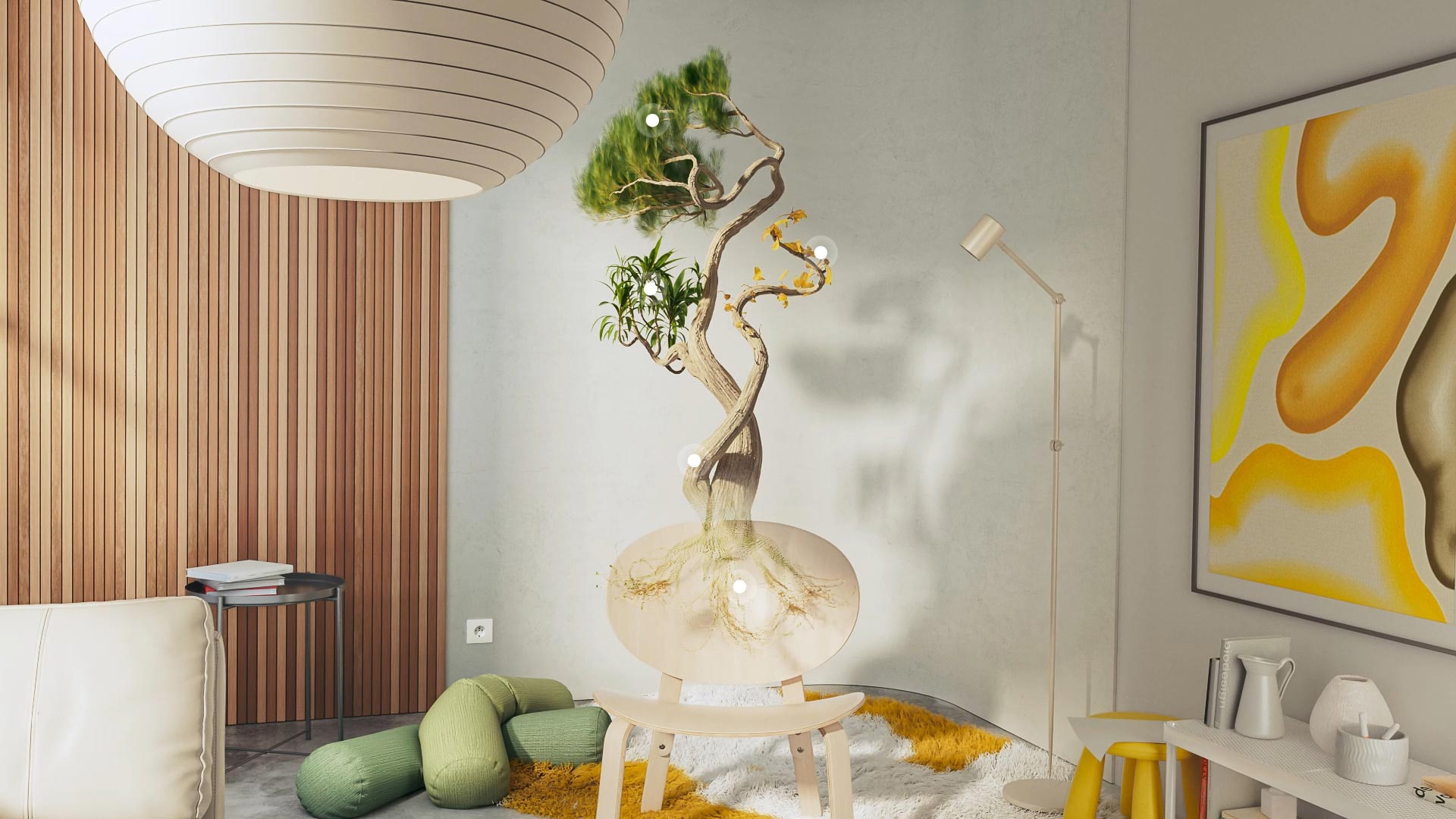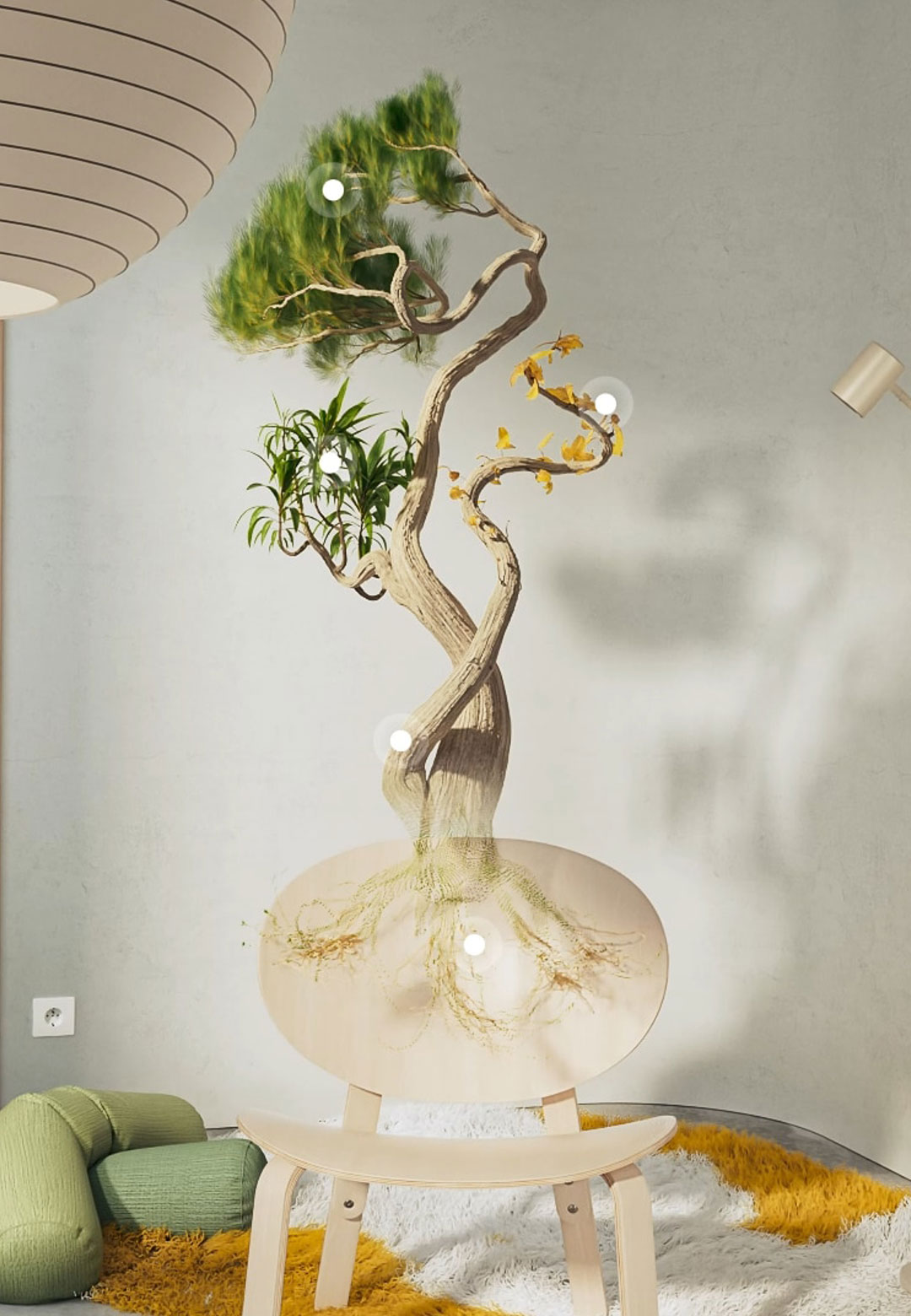In a world where everything from art and fashion to wealth and social gatherings is moving to the digital realm, IKEA’s independent research and design lab SPACE10, with their new project, is posing the question, What if digital assets could transform how we see and care for the physical world? By introducing Carbon Banks, SPACE10 explores how blockchain can encourage furniture circularity. Carbon Banks presents a physical wooden chair connected to a generative digital asset on the blockchain. The project, developed in partnership with WINT Design Lab, intends at building a sustainable approach to how we treat our furniture, by saving it from ending up in landfills.
On purchasing a piece of furniture, the user gets access to scan a unique pattern associated with it that mints the virtual tree to the user. Initially presented as a seedling, as time goes on and the chair ages, this grows into a personalised tree — developing in time parallel to the furniture’s lifespan, creating an emotional bond between the user and the product. The longevity of the furniture is mirrored in the uniquely evolving asset. Therefore, if the furniture is sold or traded, the asset is transferred to the next user where it continues to grow.
The project builds on the idea that people naturally tend to take better care of things they feel a strong sense of stewardship towards. Most often, human beings’ emotional connection to physical entities is entailed in concepts of nostalgia and time. However, the modern world is in a constant pursuit of novelty, in everything, which results in the rapid change of the products that we use. With this project, Carbon Banks seems to be bringing about a culture where furniture is perceived as an organism that lives and breathes and not just an object to cater to a function.
“The current climate crisis demands that we consider all the tools and technologies at our disposal to move towards more sustainable systems, products, services, and behaviours. The Carbon Bank chairs are made out of wood, acting as a ‘carbon sink,’ and storing carbon for as long as the furniture is in use. For this project, we look at how emerging concepts of phygital ownership, scarcity, and amplification could be used towards sustainable furniture consumption. Can linking the possessions in our homes with those in our increasingly mixed realities provide us with opportunities to relate differently to our material world?” states Ryan Sherman, creative director and strategist, SPACE10.
The team hopes that the emotional bond created in the user by the physical presence of the wooden chair and the virtual growth of the digital tree would encourage users to keep, repair, trade, and recycle their furniture. “Using advanced technology, each piece of furniture would be partnered with a unique 3D digital tree that grows in tandem with the age of the material product. Permanently bound together via the blockchain, the tree acts as a digital record of the furniture’s journey,” states SPACE10 in an official release. While Carbon Banks hopes to provide a digital testament to how one treats their physical furniture, it also presents the practical uses and functionality of digital entities, for the design world. SPACE10 collaborated with the research-led creative studio Zünc for the visual development and execution. The digital art explores a vast array of different plant species that could grow out from a familiar base with uniquely twisting branches and different styles of leaves.
“Amidst the debate on what NFTs offer, it is easy to forget that they are still an evolving technology. With Carbon Banks we saw the potential to do more—not only to connect or mirror the physical and the digital, but to add an experiential value. We imagine a new generation of NFTs called digital amplifiers. Digital amplifiers are linked to physical objects via the blockchain and augment the items they are attached to, highlighting key characteristics and impacting and enhancing the way we perceive these goods,” shares Robin Hoske from WINT Design Lab.
As NFTs gain more traction among industries and user groups, Carbon Banks steps into a developing realm of design in the virtual world. Concluding the intent of the projects, the official release states, “In a future where more and more of our time is spent moving between physical and digital realities, Carbon Banks re-imagines how digital life can directly impact our relationship with our possessions, expand the influence of our physical belongings, and even give us a new way to express ourselves online.”






 Sign in with email
Sign in with email










What do you think?